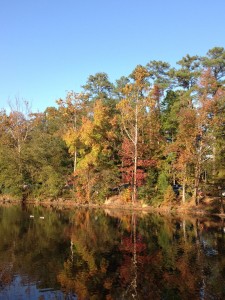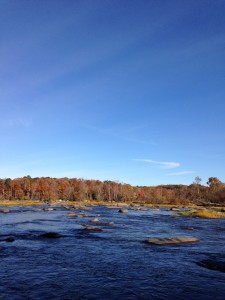When I transferred into the University of Richmond my sophomore year, I knew little about the university, never mind the city of Richmond. Being uncertain about my major, I selected classes, like most underclassmen, that fulfilled the general education requirements. My first semester, I found myself in a human geography class, relating the people to the land and learning about why lines on the map appear the way they do. Along with that class, I had registered for landscape ecology. I enjoyed going to both of these classes, especially when I compared them to my genetics course I was also taking that semester. It was easy to see where my interests were and that is when I decided to follow my passion for the environment. I was never able to forget Kim, my professor, talking about how people are inevitably linked to the land in some way, shape or form. This concept came full circle, as I finished both my environment studies and geography requirement courses over in Australia with Kim. The trip focused heavily on sustainability with a heavy concentration on the development of place identity.
Prior to my trip over to Australia, I had registered for classes for my second to last semester of college courses. As a senior, I was able to pick from a large assortment of classes and not simply just pick what was left after the upper classmen took over registration. I carefully selected the Geography of the James River Watershed course, not knowing what to expect, but hoping I would learn more about the watershed in the urban setting of Richmond. At the very least, I wanted to end the fall semester with a little more knowledge about the city where I was attending school.
We began the semester in August, learning about how the city of Richmond was built around the James River and why the city was built this way. Within a week, I had already learned so much about the city from the article A River Runs Through Us. This article reintroduced the idea of nonpoint source pollution within the Richmond City boundaries. This article left me questioning how can you get people to care about these environmental issues? How can you get people to develop place identity? This brought me immediately back to many of the lectures in Australia about getting the people out there and allowing them to develop a relationship with the land.
The weeks flew by and we continued reading more articles. Another one of my favorites was by William Cronon. He explored the idea of people being more apart of nature and having nature not be thought of as a separate entity within his The Trouble with Wilderness or Getting Back to the Wrong Nature article. So far this semester, we had identified the issues and exactly what was wrong, but still had not touched on how it could be fixed. Finally, Forsyths’s article defined the Awareness- Appraisal model. This model addressed the HOW you get people to care. This is when the semester truly took off for me.
We began explore more of the James River Park System in the Richmond City county. We took field trips, read guide books, and explored the websites. Before entering this course, to be honest, I knew nothing about the JRPS. I only knew about Pony Pasture, one of the most utilized access points on the James River. As we delved further into the course materials, we learned about how the James River truly is the central point of Richmond. We quickly began to understand how the river connected the people to the land and to their city as a whole.
Ralph White worked with the JRPS for years and truly opened our eyes to his view points of the river. He proved that if you are dedicated and passionate about something, we can accomplish many things. His viewpoints and wisdom have provided us with strength as young leaders to devote endless hours to our final project. This final project focuses heavily on helping locals and visitors access the river. As stated above, I truly knew nothing about this park system. I had no idea that there were 20 access points within the Richmond City boundary. We, as young leaders in Earth Lodge, are striving to fix this problem. We are looking to not only help raise awareness about the access points in the Richmond City County, but also in Henrico and Chesterfield. We recognize the need for people to get out there and connect with the land and the river. Our final goal is to help people become more aware of their local geography; in hopes they will behave responsibly to protect their environment and ultimately their home in the future. This course has provided me with so much more than I ever expected.
It would be easy to leave it at, I know so much more about the James River, but what this class provided we with was the most interactive class I have taken in college. It provided me with 12 new friends. (Yes, that does include you TLB) These twelve people have helped me learn about the local campus geography. We worked hard in the beginning to understand the geography on campus starting with the Westhampton Lake and twenty five trees. Next, we started to be able to understand how impervious surfaces and lack of riparian zones affect not only our water, but also the James River and ultimately the Chesapeake Bay. I believe TLB created this course on a small scale that slowly zoomed out as the semester went on. He started with something small that we all knew existed and appreciated to an extent on our campus, the Little Westham Creek. He captured our attention and continued to relate everything we talked about to a larger scale. TLB enabled us to relate our everyday life to something much bigger than us and brought us all together as one. This concept of a relationship between people and land is exactly what I fell in love with on my first day of human geography. I hope to share this feeling and understanding with people all over my town, state, nation and even the world. I must start small with passion, purpose and knowledge and create awareness within my audience.


